Global financial services company, Mastercard, is at the forefront of the payments industry and has implemented many new technologies. But that’s not to say it hasn’t come without its challenges. Gaurang Shah, the Senior Vice President for Digital Payments and Labs for Middle East and Africa at Mastercard, tells Intelligent CIO how it has used a three-pronged approach in order to be innovative.
Can you provide some background details about your current position at Mastercard?
I am the MEA lead for Digital Payments and Labs and am in charge of developing solutions and executing market strategies for cash displacement and leveraging digital payment technologies. I also lead the Labs organisation in the region, which is Mastercard’s Centre of Excellence focussed on new innovation with a special focus on financial inclusion. Prior to this role, I was Middle East and North Africa Division Lead for Global Processing, which was focused on developing and executing market strategies and national ecosystem development across the cluster.
How can companies be innovative in Africa?
Building the right solutions that aim to disrupt existing technologies. In the era of the Fourth Industrial Revolution, emerging technologies such as Artificial Intelligence, Machine Learning, Robotic Process Automation and Blockchain are ruling the roost in terms of their use-cases for commercial purposes. Emerging markets are set to contribute a large percentage to that number, with African Analysis predicting that the Internet of Things in South Africa will grow to 35 million by next year. The boundaries of technologies continue to increase and there has never been a better time in history for innovators to experiment, build and test new solutions.
When building new products, it is crucial for digital disruptors to always keep in mind the unique needs of each market in which they operate. In a world where everything you want can be bespoke or artisanal, consumers have little time for services that don’t take their particular context or needs into consideration.
A few years ago, when Mastercard was designing Quick Response (QR) payment solutions for markets in Africa, the biggest discussion at the time revolved around driving local adoption by working with the systems and infrastructure those markets already had in place.
In South Africa, this meant designing a QR payment solution – Masterpass – that was card-based. Why? Because in South Africa, 80% of the population already had a payment card.
To use the service, consumers load any bank card into the secure Masterpass digital wallet on their mobile phones and scan a QR code displayed on a website or at the point of sale to make a payment. When we looked elsewhere in Africa, many people didn’t have cards, so Mastercard designed a solution called Mastercard QR. This solution enables consumers to pay merchants directly from their mobile money or bank accounts using either a smartphone to scan a QR code or a feature phone to enter a text code at checkout.
The experience mimics a cash transaction as the consumer ‘pushes’ payment to the merchant, which is received almost instantly. For merchants, Mastercard QR provides an affordable way to accept digital payments from a range of different payment providers (mobile money or banks) — even where traditional card payment infrastructure, or an electric grid, may not be present.
You have talked about exponential innovation. Can you explain what this is?
When Uber was trying to solve the problem of taxi availability anytime, anywhere, it invented an entirely new concept and caused a paradigm shift. Now, every car on the road can potentially become a taxi and the industry has changed forever. Airbnb in the hospitality industry and Spotify and Netflix in the entertainment industry have done the same.
Similarly, in the payments industry, when tokenisation technology was introduced, it was a conceptual shift in thinking. Should card data be compromised, the data became useless to fraudsters. This not only helped to protect consumers’ financial data, but also boosted consumer confidence in an industry becoming increasingly more digital.
This is the very definition of exponential innovation – it goes above incremental innovation to reimagine the consumer experience and create efficiencies within the industry’s value chain. It challenges the status quo, looks at pain points with a different set of lenses, with the aim to eliminate them, not just reduce them.
It is necessary to approach your product or service from the viewpoint of the end-consumer. Every organisation today is a B2C organisation, not a B2B or a B2G, because ultimately the work you do will have considerable impact on individual lives. It is that impact that you must look to positively transform, to achieve exponential innovation.
Apart from building solutions, what are the other components of the ‘three-pronged approach’ to exponential innovation?
Acquire. Look at your landscape. The rise of fintechs and startups is disrupting virtually every industry, not just the tech sector. In the past year, more than US$1 billion has been raised by African startups so far, with 83 deals exceeding US$1 million, according to VC4A.
Thanks to hyper-digitalisation, these startups have far greater access to consumers than was ever possible before. It is important to view these players not as competition, but as potential strategic partners that can help you achieve exponential innovation.
A good example is Standard Bank’s acquisition of the majority stake in Firepay – the startup behind leading mobile payments product SnapScan. This is a clear indication of how a bank, which has already established brand recognition, customer trust and a distribution network, is benefiting from the agility and customer design capabilities of a fintech.
More fintech players mean more innovation – making the global digital payments space competitive enough that the next massive disruption is just around the corner.
Collaborate. Technology giants no longer work in silos, but rather encourage knowledge-sharing with each other and collaboration so that the world’s technologies can talk to each other. Let me give you a world-famous example. When Apple decided they wanted to launch the Apple Card, Mastercard didn’t shy away – we became their global payments network.
Similarly, many technology-based startups and consumer-facing apps only work thanks to established companies partnering with them. For example, popular apps such as Mr D and Uber enable consumers to purchase their food and travel anytime, anywhere simply from their smartphones.
For this to happen, several stakeholders need to work together. The app itself needs to ensure that the consumer has an easy-to-understand user experience that allows them to make the purchase seamlessly. The telecom provider needs to ensure that a person has sufficient data capabilities to be able to process this payment via their phone. The payment provider needs to ensure they can seamlessly process the payment safely and securely. Collaboration is thus key in this process.
What challenges have you had to overcome?
Trying to achieve exponential innovation comes with its fair share of challenges. In the payments industry for instance, our biggest concern is around misconceptions around security. Consumers take a lot of time to change behaviours and have concerns regarding cybersecurity and fraud. According to a 2018 Mastercard survey, 87% of South Africans believe that data breaches and hacks are the new normal and will likely happen to everyone.
The key to addressing this is three-fold. First, it’s necessary to establish a dialogue involving knowledge-sharing with government and banking and technology partners to address these issues in a collaborative way. Second, deploy the technological tools available that minimise fraud concerns and strengthen authenticity. Tokenisation and Artificial Intelligence have been instrumental in achieving these goals. Lastly and most importantly, it is necessary to raise awareness on these issues to gain trust amongst consumers. Trust is the foundation of the digital economy, and consistent efforts must be made to ensure that trust.
Every company that aims to innovate will have its fair share of challenges while trying to achieve exponential innovation. But keeping the larger picture in mind and addressing these concerns is essential not just for a firm’s growth, but also their sustainability and survival.
By executing a three-pronged approach and leveraging technology to achieve exponential innovation, it is possible to transform industries, benefit economies and positively impact and enrich communities. The world today is evolving at an exponential pace – disrupting technologies are changing the way people shop, travel, communicate, pay and much more. Exciting times lie ahead, providing companies are able to approach and harness innovation in the right way.
Click below to share this article

